Preparing for Strategic SEO Planning

Embarking on the development of an SEO strategy requires a foundational understanding of its place within the broader context of digital marketing. Recognizing the typical objectives, or Key Performance Indicators (KPIs), and the various factors that steer the course of SEO planning is essential. This article is designed to equip you with the crucial knowledge necessary to craft an impactful SEO strategy.
We'll delve into the dynamic relationship between digital marketing and SEO, outline the standard goals and KPIs, and explore the diverse situations that influence the direction of your SEO planning. By the end of this lesson, you will have a clear blueprint for constructing a robust and effective SEO strategy.
Digital Marketing vs. SEO
SEO is only one part of digital marketing activities, but it's critical.
Defining SEO's role in your entire digital marketing plan is crucial. Depending on your objectives, there may be a better approach than SEO.
There are many alternative approaches to digital marketing. They are primarily categorized into inorganic (paid marketing) and organic (non-paid marketing).
Search Engine Optimization is categorized under the organic marketing approach.
Design SEO Plan with a long-term view
SEO takes a long time to generate results compared to inorganic marketing activities, such as PPC (Pay Per Click) ad campaigns.
The timeframe for getting noticeable results can differ by website situation. More prolonged efforts are required if the website is entirely new and has a new domain.
As a rule of thumb, some improvements can be observed within a few months, while more significant results may take six months to a year.
Although Search Engine Optimization requires continuous effort, it provides long-lasting benefits compared to PPC, which provides immediate short-term benefits.
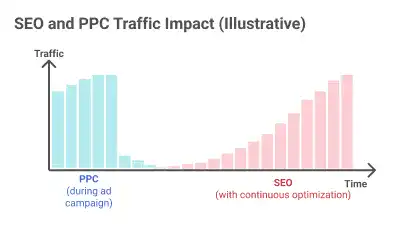
Considering the nature of SEO, you need to design a plan with a long-term view. At least, you may need a plan with a 6-month to 1-year time frame.
Note: Utilizing PPC for SEO for testing purposes
Even though you prioritize SEO over PPC, it can be beneficial to utilize PPC occasionally. While SEO requires a long time and effort with uncertainties, you can have more traffic control through PPC.
You may struggle to get proper data points if your website is new and has limited traffic. Doing a PPC ad campaign for testing purposes may make sense if you would like to obtain data points when creating your SEO plan.
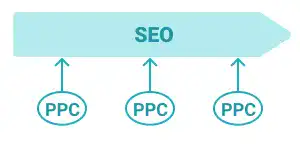
Here are some examples when you can utilize PPC for SEO planning:
- Keyword Research: Use PPC campaigns to identify high-performing keywords
- Meta Title and Description Optimization: Conduct A/B testing with PPC to optimize meta titles and descriptions for better click-through rates in organic search results.
- Landing Page Optimization: Conduct A/B testing with PPC to optimize the landing page for better user engagement.
- Geographical Insights: Conduct PPC campaigns in specific locations to understand performance differences by target location.
Define SEO Goals and KPIs
Business Goals
First, when making a plan, you should be clear about your business goals, especially those that can be achieved through SEO.
The business goals can differ by stage of the website. If the website is newly published, the first goal can be gaining traffic itself.
If you target accumulating membership users, # of membership conversions can be a goal.
Revenue can be a business goal if your service is at its monetization stage.
Practically, you may not have business goals with clear target numbers in the initial stage as you don't know the potential of your website yet.
In that case, you should continue thinking about the goals you want to achieve through SEO activities as you move along and refine the plan accordingly.
Understand the KPI hierarchy to make an efficient SEO plan
As search engine optimization requires a long journey, it can be helpful to have interim KPIs (Key Performance Indicators) to track the progress of your efforts.
There are several ways to set KPIs. One way is to define KPIs based on visibility to crawlers and users. For example, you can set four key checkpoints to monitor the progress.
# of indexed pages
If your website or blog post is new, search engines may not even recognize it. The first step is to make your pages visible to search engines.
# of ranked keywords
Once your pages are indexed, the next milestone is to make those pages ranked on SERPs (Search Engine Result Pages) for specific keywords.
Ranks in SERPs
Once your pages are ranked on SERPs, improving their ranking is the next goal. For example, if the pages are ranked outside the top 10 search results, the target would be getting into that list.
Organic traffic from SERP (Clicks)
As your pages get more visible to users through a higher rank on SERPs for the target keywords with a reasonable search volume, the pages' organic traffic (clicks on SERPs) will naturally increase. And the higher organic traffic will become the basis for achieving your business goals.
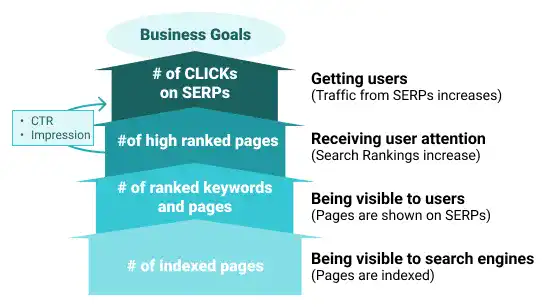
There are other operational metrics that help to understand website status.
Impression
Impressions are the number of times a particular piece of content (in this case, search results) is viewed by users, regardless of whether it is clicked.
One of the primary objectives of having a higher ranking in SERPs is to increase the number of impressions.
CTR (Click Through Rate)
CTR is simply Clicks per Impression. In SEO, it measures how attractive your page title and descriptions shown on SERPs are.
Many other KPIs, such as the number of backlinks, domain authority score, and average user engagement time, can be used to set milestones for specific activities. We'll explain them later in this tutorial.
Address Ranking Factors
The second thing you need to understand before making a plan is how to address ranking factors to increase your page rankings effectively.
As explained on the previous page, Google's ranking algorithms use many ranking factors.
Typically, a large part of the effort is spent dealing with the ranking factors through on-page SEO, off-page SEO, and technical SEO.
Making an SEO plan involves defining when and how to execute SEO techniques and actions so particular ranking factors can be prioritized within specific timelines.
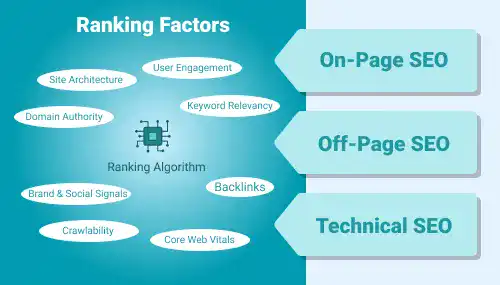
Three Aspects of Different SEO Situations
Required efforts and approaches can vary depending on the situation of your website (or web page). Here are three critical aspects that can be used to define the situation.
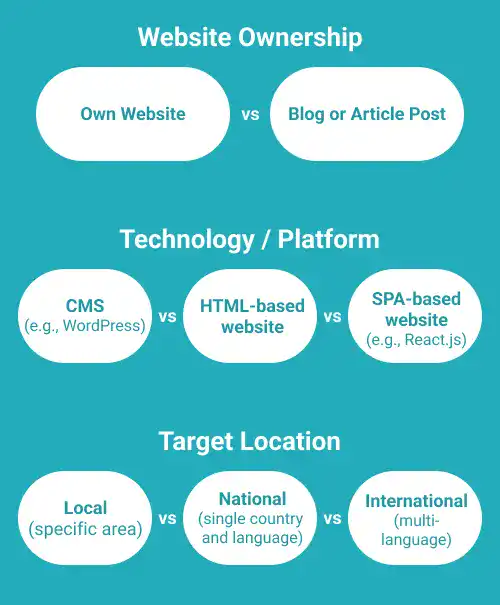
Website Ownership
The first aspect is whether you own a website yourself or post articles to websites managed by others.
If you own (or manage) a website, you must do end-to-end efforts under your control.
If you post blogs or articles to someone's website, you cannot control some aspects, such as domain authority.
For bloggers using other platforms, the most essential approach is On-Page SEO — setting the right target keyword, applying content writing techniques, and organizing multiple blog posts effectively.
Technology/Platform
The second aspect is technology or platform. At the highest level, there are three categories: CMS (Content Management System), HTML-based website, and SPA (Single Page Application)-based website.
CMS
Several GUI (Graphical User Interface) based SEO features are already in place if you use CMS such as WordPress, Squarespace, or Wix.
If the CMS is cloud-based, you can also get away with infrastructure performance management.
HTML-based Website
HTML-based websites are a standard format. Their front-end is written in HTML and CSS with some JavaScript.
Compared to CMS, UI design will be more flexible, but you may need to make some extra efforts in SEO, especially technical SEO.
SPA-based Website
SPA stands for Single Page Application, usually developed in a JavaScript framework such as React.js.
SPA-based websites usually require extensive additional efforts to make them crawler-friendly. For example, SPAs often use Client-Side Rendering, which makes it difficult for search engines to crawl and evaluate the pages correctly.
One solution for client-side rendering issues is to implement Server-Side Rendering (SSR), which can pre-render HTML on the server before sending it to the client.
Target Location
The third aspect is target geographies. As Google returns different results for the same keyword depending on the user's location and type of search keywords, SEO efforts must also be tailored to the location.
If you own a physical shop in a specific location, apply Local SEO techniques.
If you target international users, you may need to manage multi-language websites, and target keywords must be optimized by country.
Check Chapter 6. Geographical SEO: Local SEO and International SEO to understand the geographical SEO context.




